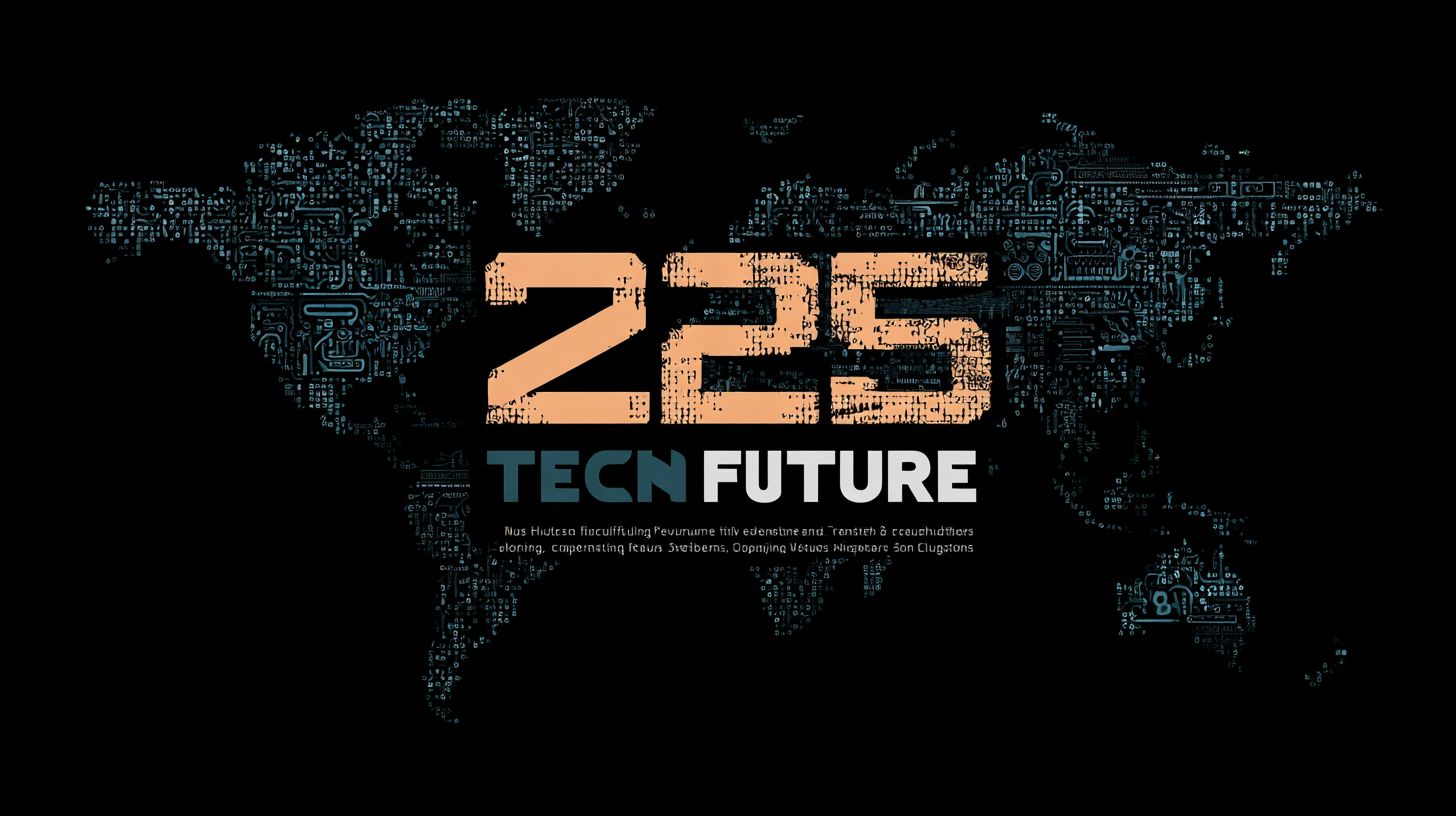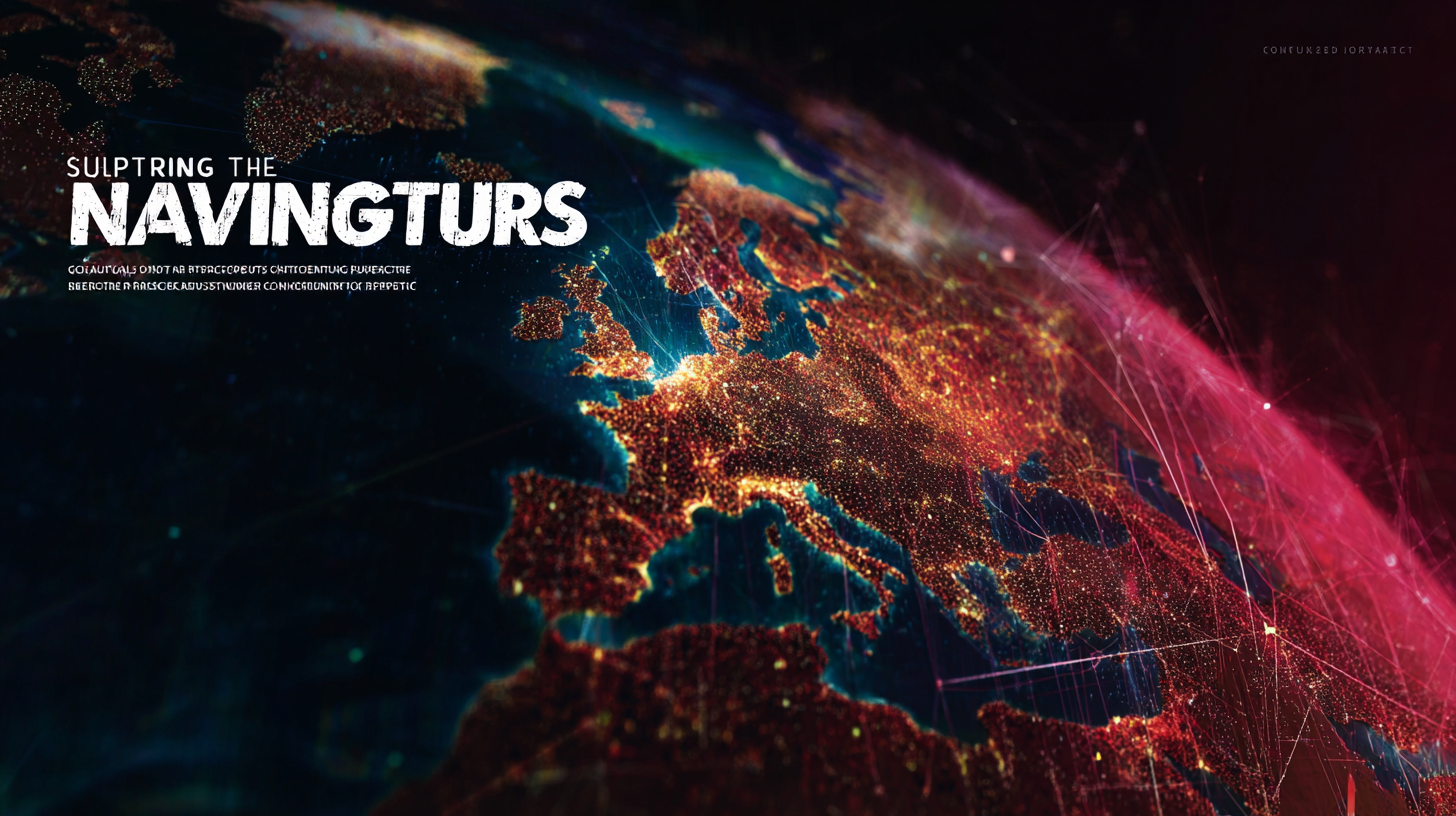
Navigating the Future: The 2025 Tech Trends Shaping Global Procurement Strategies
As we move towards 2025, the landscape of global procurement is poised for a significant transformation, largely driven by technological advancements. According to a recent report by the McKinsey Global Institute, organizations that incorporate digital tools into their procurement strategies can achieve cost savings of up to 20%. This shift not only enhances efficiency but also fosters stronger collaboration with suppliers, which is crucial in a rapidly evolving market. Additionally, Gartner highlights that 56% of procurement leaders are prioritizing the adoption of advanced analytics and automation to improve decision-making processes. In this context, understanding emerging tech trends becomes essential for navigating the complexities of supplier relationships and ensuring sustainability and agility in procurement strategies. This guide aims to delineate the pivotal tech trends that will shape global procurement strategies in 2025 and beyond, helping organizations stay competitive in an increasingly data-driven environment.

The Role of Industry Standards in Transforming Global Procurement Practices
In the evolving landscape of global procurement, industry standards play a pivotal role in shaping efficient and effective practices. As organizations navigate the complexities of their supply chains, adherence to established benchmarks not only enhances compliance but also fosters collaboration among stakeholders. By aligning operations with recognized standards, companies can streamline processes, reduce risks, and improve overall sustainability in their procurement strategies.

Tip: Regularly review and update your procurement policies to ensure they align with current industry standards. This proactive approach can help mitigate compliance risks and enhance operational transparency.
Moreover, embracing these standards can facilitate technological integration, enabling procurement teams to leverage innovative tools and solutions. As digital technologies continue to transform traditional procurement practices, having a foundation built on robust standards allows organizations to optimize their use of data, automate workflows, and enhance supplier relationships.
Tip: Invest in training for your team to understand the latest industry standards and technology tools. Well-informed employees are crucial for maximizing efficiency and achieving strategic procurement goals.
How Emerging Technologies are Influencing Procurement Standards
Emerging technologies, particularly artificial intelligence, autonomous systems, and quantum technologies, are redefining procurement standards across various industries. The recent shift in U.S. AI policy emphasizes high-impact use cases, moving away from the previous administration's risk-averse stance. This change encourages federal agencies to integrate AI into their procurement practices, allowing for more innovative solutions that address pressing challenges. As these technologies become more integrated, procurement strategies must evolve to support not just compliance, but also ethical and efficient use of AI.
In addition to AI, the growing focus on sustainability is reshaping procurement strategies globally. Green public procurement initiatives highlight the necessity for governments to adopt low-carbon practices as part of their operational mandates. Leveraging regulations and partnerships, governments are increasingly prioritizing suppliers who demonstrate environmental responsibility. This trend aligns with a broader recognition that technological advancements must also consider their impact on the environment, pushing organizations to rethink how they engage with both suppliers and technology. As these trends continue to shape the procurement landscape, organizations will need to navigate these changes purposefully, ensuring they remain competitive and responsible stewards of technology.
Building Resilience: Adapting Procurement Strategies to Meet Industry Norms
Adapting procurement strategies to meet evolving industry norms is essential for businesses aiming to build resilience in 2025 and beyond. According to a recent report by McKinsey & Company, companies that incorporate advanced analytics into their procurement processes can reduce costs by up to 30%, showcasing the tangible benefits of leveraging technology in supply chain management. As global markets face volatility, organizations must prioritize flexible procurement approaches that allow for quick responses to disruptions, be it through alternative suppliers or diversified sourcing strategies.
Furthermore, a study by Gartner indicates that 70% of organizations are planning to increase their investment in digital procurement technologies by 2025. This transition is not merely a trend but a necessity to enhance efficiency and mitigate risks associated with traditional procurement methods. Incorporating automation, AI-driven insights, and robust supplier management tools will enable companies to stay ahead of the curve, ensuring they can navigate uncertainties while aligning with industry standards. By embedding resilience into procurement strategies, businesses will be better equipped to thrive in a rapidly changing landscape.
Navigating the Future: The 2025 Tech Trends Shaping Global Procurement Strategies - Building Resilience: Adapting Procurement Strategies to Meet Industry Norms
| Trend | Impact on Procurement | Technology Enabler | Adaptation Strategy |
|---|---|---|---|
| AI and Machine Learning | Improved decision-making and demand forecasting | Cloud Computing | Invest in AI adoption and training |
| Blockchain Technology | Increased transparency and traceability in supply chains | Distributed Ledger Technology | Develop partnerships with blockchain providers |
| Sustainable Procurement | Enhanced corporate social responsibility | Renewable Energy Solutions | Integrate sustainability metrics into procurement processes |
| Data Analytics | Better insights for supplier performance and cost efficiency | Big Data Technologies | Leverage data visualization tools for strategic insights |
| Digital Supply Chain | Enhanced agility and responsiveness to market changes | IoT and Advanced Robotics | Adopt integrated supply chain management systems |
The Impact of Global Regulations on Procurement Efficiency and Standards
As global procurement strategies evolve, understanding the impact of regulations on efficiency and standards becomes crucial. A recent report by the Institute for Supply Management (ISM) highlights that adherence to international regulatory frameworks can enhance procurement efficiency by as much as 20%. This efficiency is a direct result of standardized practices that improve supplier collaboration and reduce the time to market. Moreover, compliance with regulations such as GDPR in Europe and various trade agreements fosters a transparent procurement environment, allowing companies to mitigate risks related to data privacy and trade barriers.
Tip 1: Embrace technology to streamline compliance processes. Implementing advanced procurement software can automate compliance checks, allowing teams to focus on more strategic tasks.

Tip 2: Regularly update your team on changes in global regulations. Keeping abreast of regulatory shifts can aid in adapting procurement strategies promptly, ensuring compliance and maintaining operational fluidity.
Future-Proofing Procurement: Embracing Innovation and Compliance in 2025
As global procurement strategies evolve in 2025, organizations must focus on future-proofing their processes by embracing innovation and ensuring compliance. According to a recent report by Gartner, nearly 70% of procurement functions will undergo a significant technology transformation by 2025, aiming to enhance efficiency and responsiveness. This shift underscores the importance of adopting advanced technologies such as artificial intelligence (AI) and blockchain to streamline operations, improve transparency, and mitigate risks associated with supply chain disruptions.
Moreover, compliance remains a critical factor as procurement teams navigate an increasingly complex regulatory landscape. A study by Deloitte highlights that 58% of procurement leaders consider compliance with global standards a top priority in their strategic planning. Implementing robust compliance frameworks, combined with innovative solutions like automated auditing tools and real-time monitoring systems, can help organizations not only adhere to regulations but also maintain a competitive edge. Aligning innovation with compliance will be essential for procurement teams aiming to drive sustainable growth and resilience in the years to come.
